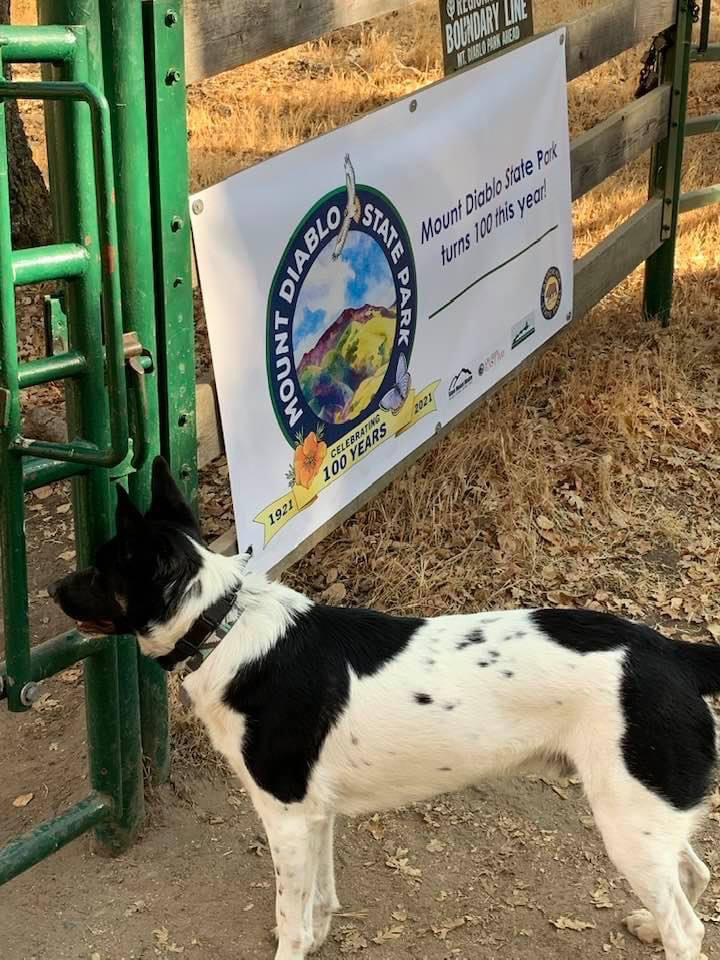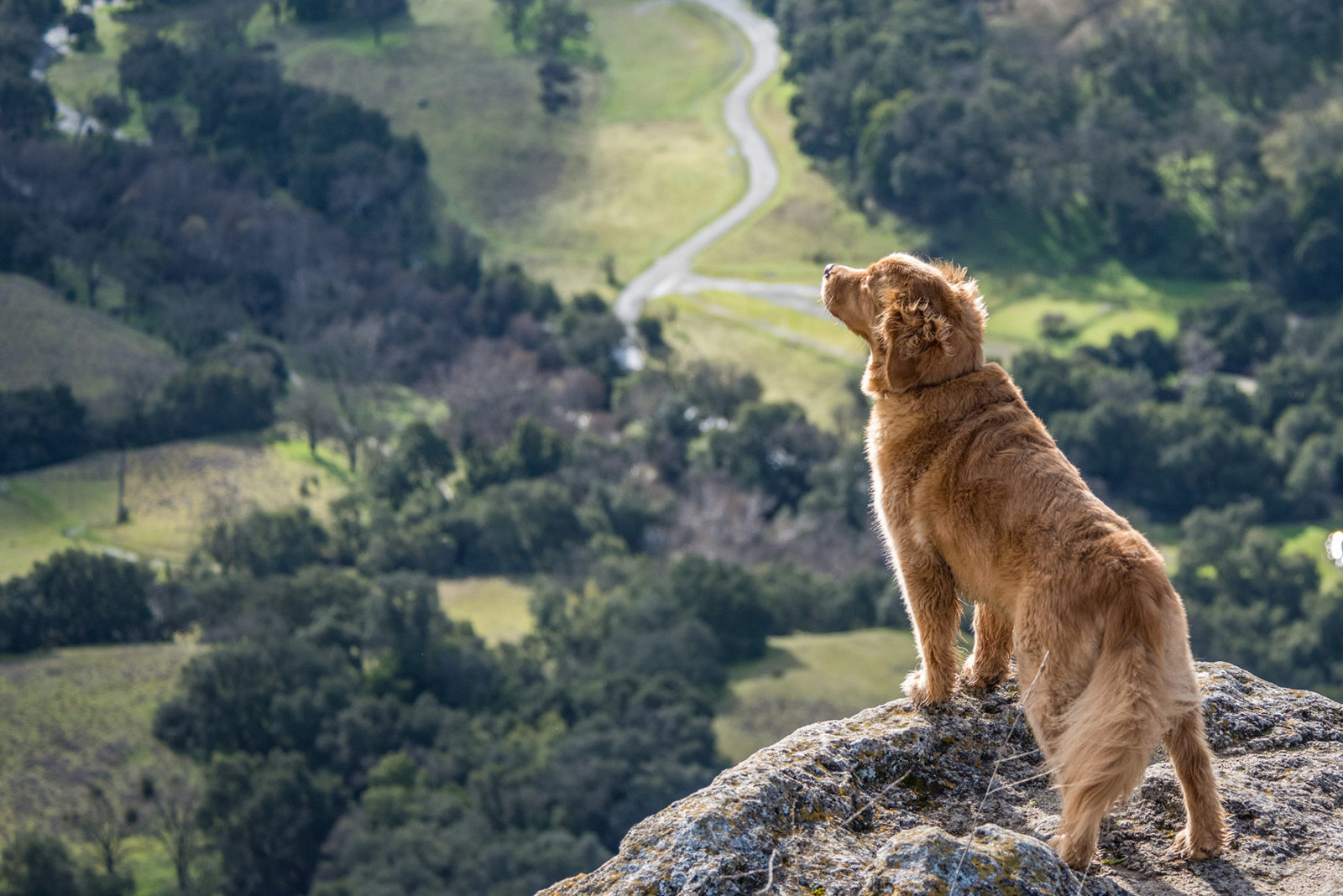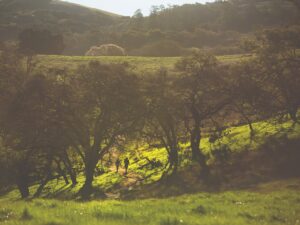Dog owners almost always believe that their canine family members are the smartest, best trained, and most loveable pups ever born. I know I feel that way, and often enjoy being out hiking with our dog in parks and public spaces. You can’t help but smile as you see how happy it makes them as they explore all of the amazing sights and smells along the way.
I felt just this way when, a few years ago, I began a hike with my wife and our leashed dog. We passed through a gate, absorbed in conversation, only to be stopped about 100 yards in by a Mount Diablo State Park ranger. He already had his citation book in his hand. “No dogs in the park,” he said as he pulled a pen from his pocket and began writing. I protested, flabbergasted. “What?! But he’s leashed!” I had hoped for a warning, but was told that the warning was posted on the gate we had just walked though. The ranger handed me a citation for $350, a tough way to learn a lesson, and one that, at the time, I clearly had no true appreciation for. It is somewhat ironic that, many years later, that very ranger helped train me to become a docent for the State Park. And, no, I didn’t have the guts to remind him of my previous canine indiscretion.
Now I know that only some wild areas allow dogs, sometimes even off-leash. Others categorically ban dogs – yes, even my brilliant, trained, and loveable pooch. As a Mount Diablo State Park natural history docent, I often make my way into the park via East Bay Regional Park District property. I step from a land of dogs, often allowed off-leash, to the State Park where bringing your dog along can cost you big bucks.
So, why the dramatic difference?
Cameron Morrison, the supervising ranger for Mount Diablo State Park, and Dania Stoneham, the unit manager for seven local East Bay Regional Parks, agreed that differences in dog-related regulations stem from state and regional parks’ unique mission statements. Layered on top are specific ecological considerations and use designations for each environment.
“Regional parks are meant to be enjoyed by everyone, and part of a being human is being part of a community — a community of all user groups that come,” Stoneham says. “Dogs have become part of people’s families, and given the EBRPD mission, to exclude them would be like excluding a family member. We do look at each specific area and develop a plan regarding dogs, but we do try to allow the park user to have as much of an experience as they can within the limitations of the environment.”
Morrison explained that State Parks’ mission statement puts more of an emphasis on preserving and protecting resources. So, how do we get from “preserving and protecting resources” to the State Parks’ not allowing dogs in undeveloped areas, such as trails? “Many people don’t realize that dogs can spread domestic diseases and parasites to wild animals,” he says. “And dogs are territorial. Marking territory can confuse coyotes and foxes, and deter them from remaining in the area. Even the scent of a dog can disturb or frighten the wildlife.”
Morrison went on to say that State Parks are generally larger, more significant culturally and have more natural resources, requiring a different approach than those in a regional park.
So, now we’re back to the dilemma that got me into trouble — passing through a gate, and suddenly you’re “not in Kansas anymore, Toto!” We’re all accustomed to urban “zoning,” as society attempts to combine several compatible activities by use. The same holds true as we grapple with use of our wild areas. While the stewards of our East Bay Regional Parks are more often than not striving to accommodate recreational activities, our State Parks are primarily focused on preserving cultural and natural resources.

Are these goals at odds with each other? It’s interesting that the subject of dogs is often at the center of such a question, especially when state parks and regional parks border one another. Personally, I am grateful to have a place that I can explore and enjoy outdoor with my dog. I also agree that we should prohibit dogs entirely from some wild places. We all know that dogs like to chase animals. Morrison reminded me that this can deter animals from returning to an area frequented by dogs, resulting in abandoned nests or dens. Dogs chase horses, sometimes resulting in injuries to horse or rider, and Morrison says he’s taken reports of dogs biting campers, hikers, and bicyclists.
Stoneham and the East Bay Regional Park District have the challenging mission of balancing the protection of wild land while allowing a variety of outdoor recreational opportunities. Dog owners are one of the largest park user groups, and the district tries to welcome them into the parks and provide a good visitor experience. “We do create rules regarding dogs to limit the impact on the natural environment,” she says. For example, one rule that has been in place for several years requires that all dogs be leashed when within 200 feet of a trailhead or parking lot. (Did you know this? I didn’t.) “This creates an important buffer because even very well-behaved dogs get excited when going into the park,” she says.
Some regional parks also have leash-only areas, or those where dogs are entirely prohibited.
We can’t talk about dogs in our parks without mentioning poop. We’ve all heard the argument that horse waste is all over the trail, so what’s the big deal about a bit of dog waste too? The answer is, there is a big difference. Both Morrison and Stoneham are quick to point out that horses are vegetarians and their waste will quickly decompose. Dog waste on the other hand, does not decompose quickly and while it is present it serves to mark territory. Dog waste is biologically considered a litter item, while horse manure is not. The Environmental Protection Agency (EPA) classifies dog waste as a dangerous pollutant, in the same category as toxic chemicals and oil. Wild animal feces simply return nutrients and resources back to the ecosystem that produced them in something of a closed loop. On the other hand, dog feces contain harmful parasites and germs, and even after a year, these contaminants can remain in the soil.
While differing park rules about dogs is a source of confusion, I remain grateful that we have places where we can still enjoy the outdoors with our best buddies, and those wonderful wild places where wildlife can be free from the very real and negative impacts that dogs bring.





